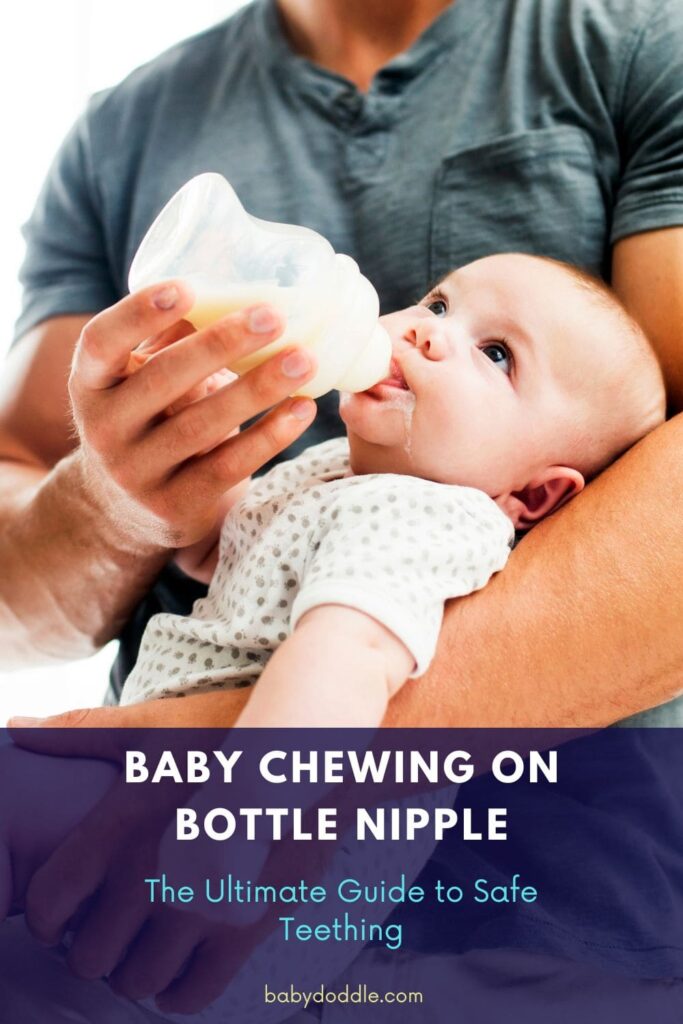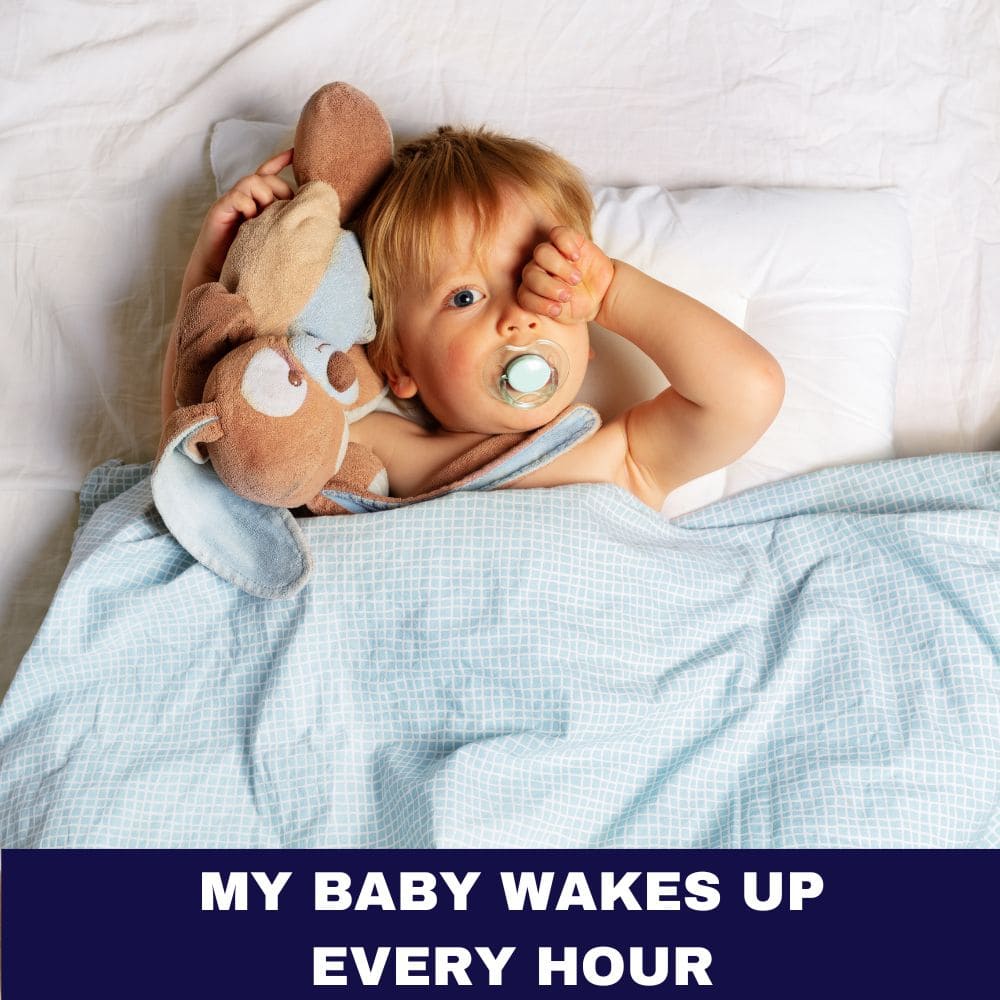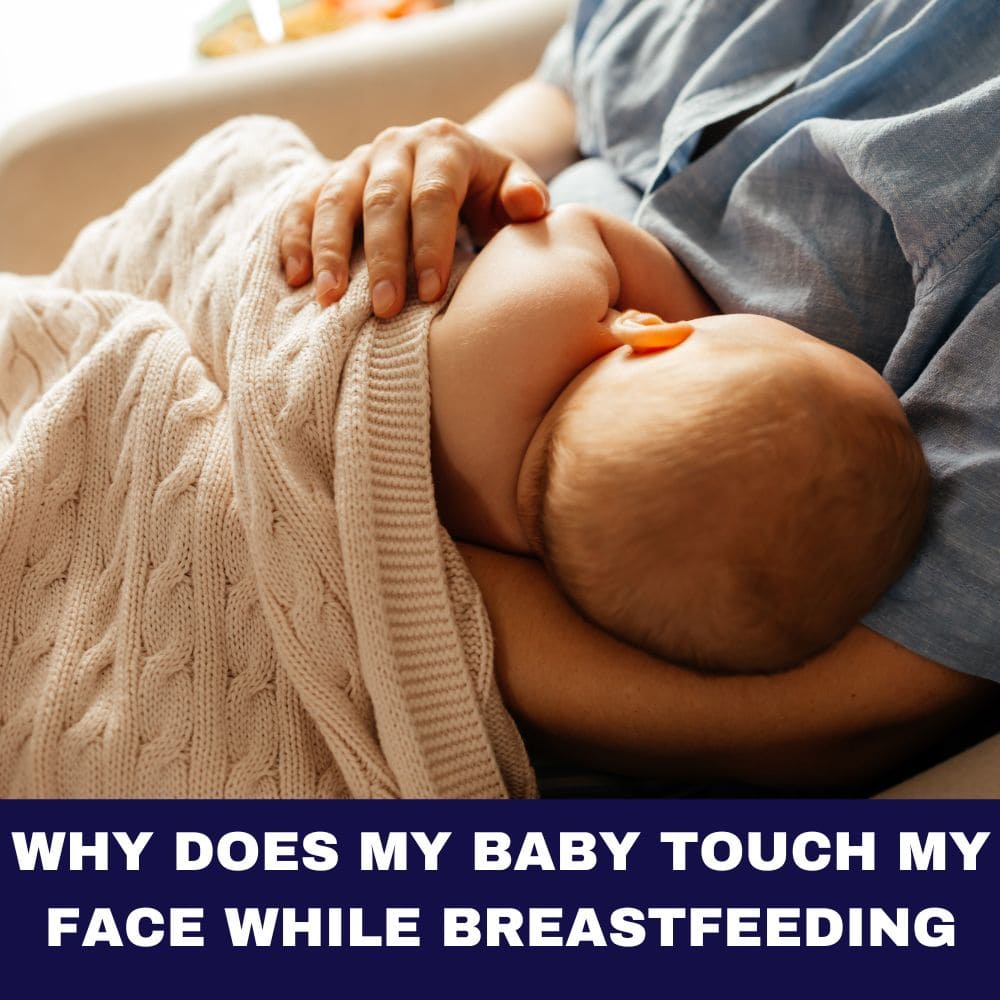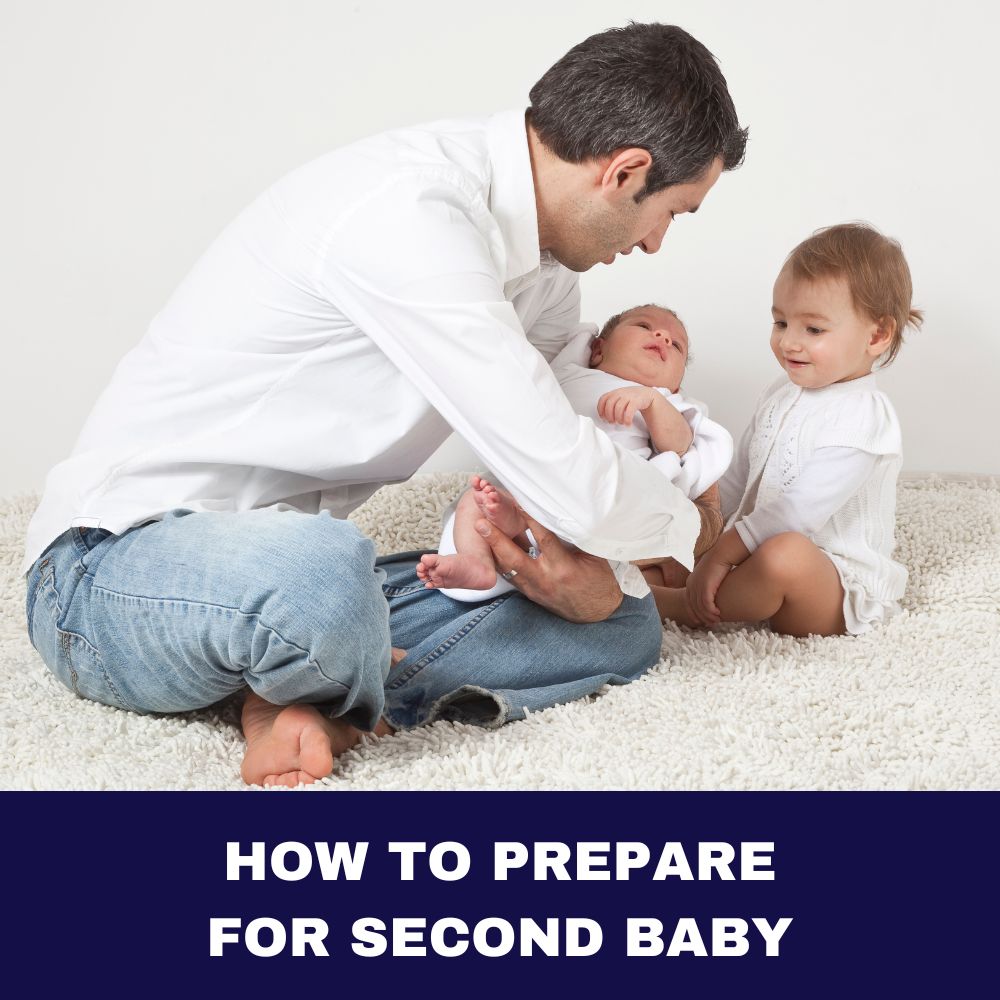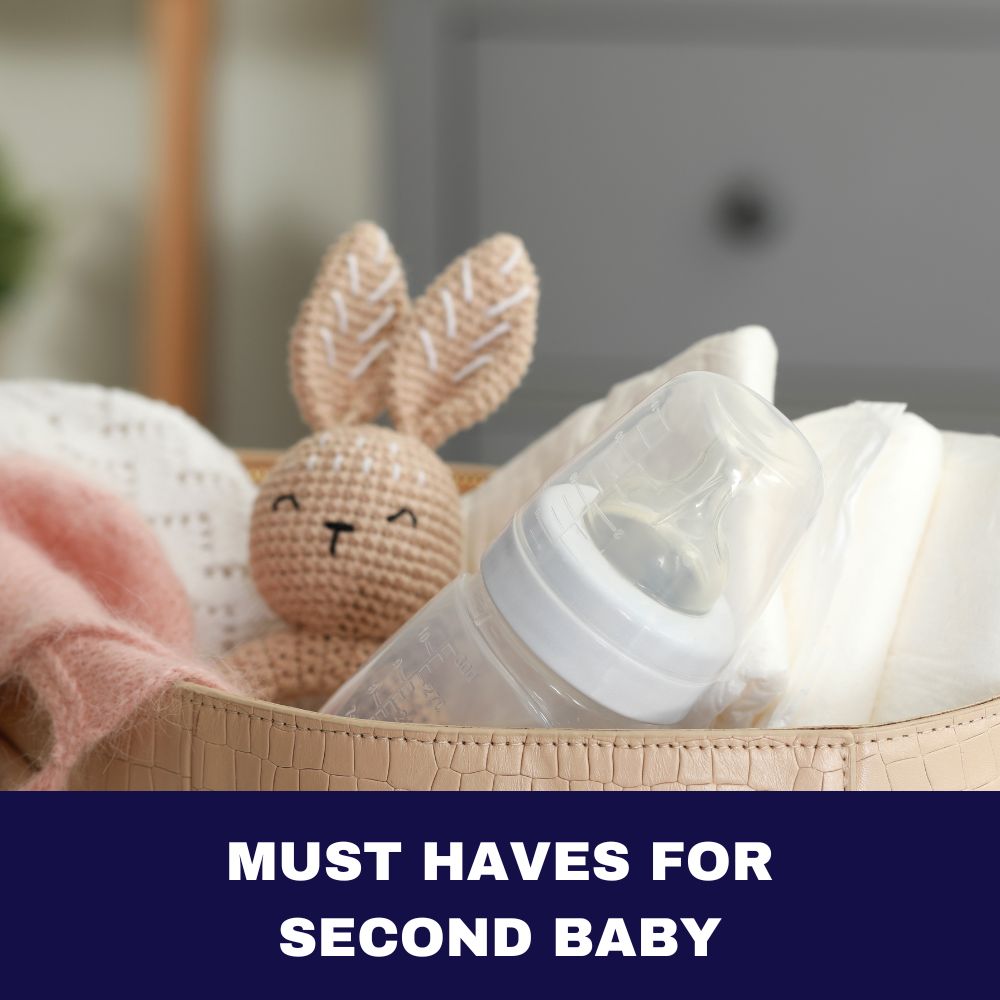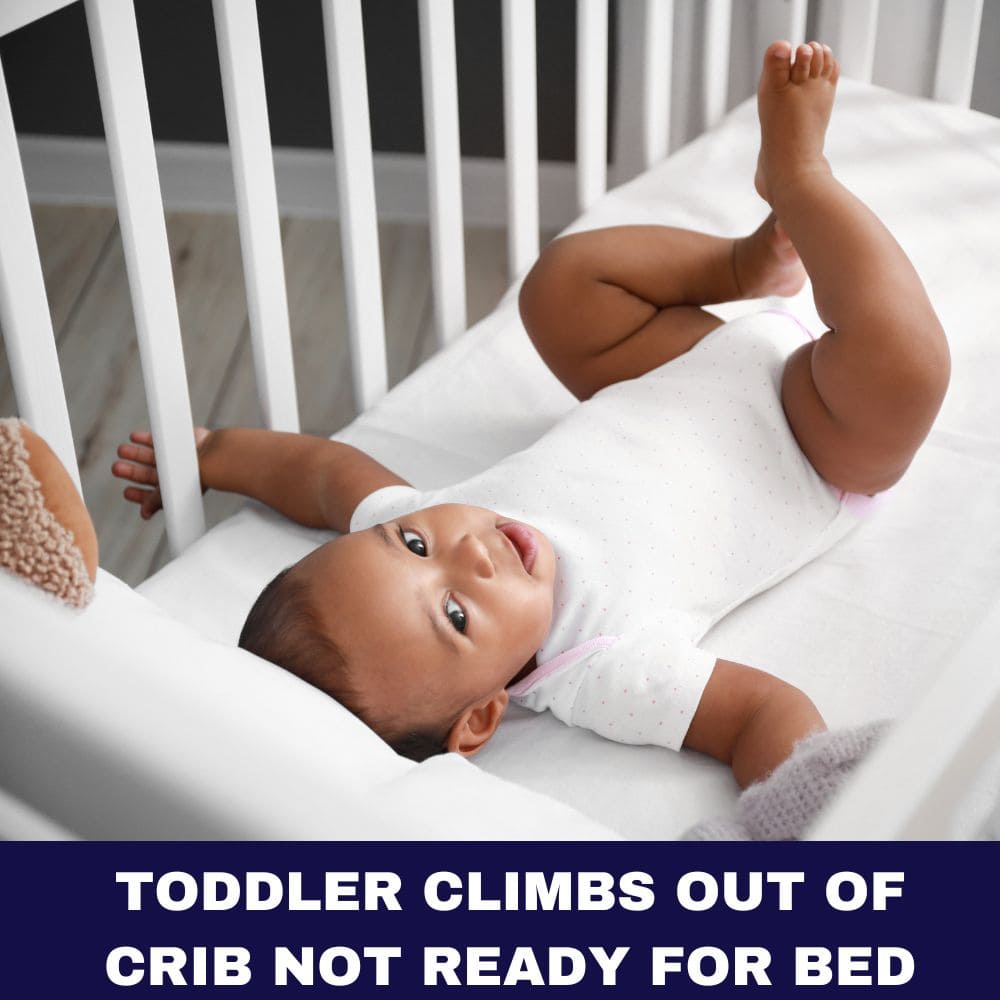Let me take you on a little journey back in time. Do you remember those nights when you were a new parent, exhausted yet filled with indescribable joy? The tiny bundle in your arms was your whole world, and every coo, giggle, and whimper held profound meaning. One day, you noticed your little one chewing incessantly on their bottle nipple, and a wave of worry washed over you. “Is this normal? Am I doing something wrong?” Fear not, dear friend, for this is a tale as old as time itself – a rite of passage that every parent must navigate. Buckle up, and let’s dive into the fascinating realm of babies and their beloved bottle nipples.
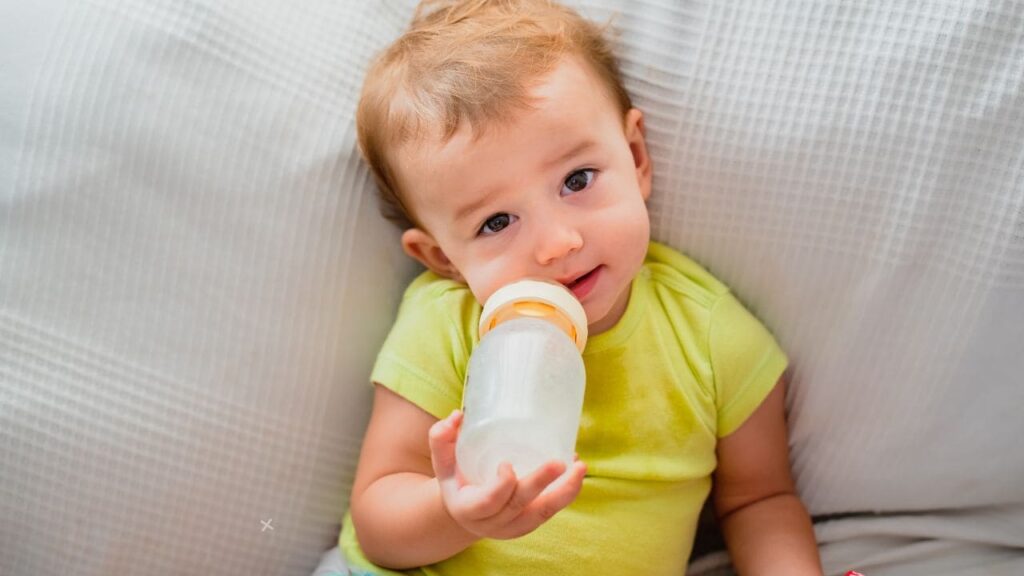
Introduction to Baby Chewing on Bottle Nipples
Watching your baby gnaw away at their bottle nipple can be both endearing and perplexing. It’s a behavior that often leaves new parents scratching their heads, wondering if it’s a harmless phase or a cause for concern. Fear not, for this is a perfectly normal and expected occurrence in a baby’s development. In this Ultimate Guide, we’ll unravel the mysteries behind this captivating behavior and equip you with the knowledge to navigate this delightful stage with confidence.
The Teething Process Explained
Ah, teething – the bittersweet rite of passage that every parent must endure. It’s a journey filled with sore gums, drool cascades, and sleepless nights. But fear not, for this phase is a beautiful testament to your little one’s growth and development. Typically, the teething process begins around 4-7 months of age, and the first tooth usually emerges between 6-12 months. However, every baby is unique, and some may start teething earlier or later. During this time, you may notice your little one drooling excessively, gnawing on their fists or toys, and experiencing crankiness or disturbed sleep patterns. These are all perfectly normal signs that their tiny teeth are making their grand entrance into the world.
| Age Range | Teething Milestone |
|---|---|
| 4-7 months | Bottom front teeth (central incisors) emerge |
| 8-12 months | Top front teeth (central incisors) emerge |
| 9-16 months | Top lateral incisors emerge |
| 10-18 months | Bottom lateral incisors emerge |
| 13-19 months | First molars emerge |
| 16-22 months | Canine teeth (cuspids) emerge |
| 23-31 months | Second molars emerge |
Reason 1: Your Baby Is Teething
Ah, the age-old tale of teething woes! When those tiny teeth start making their way through your baby’s tender gums, it’s only natural for them to seek relief by chewing on anything within reach – including their trusty bottle nipple. The gentle pressure and soothing sensation of gnawing on the nipple can provide a much-needed respite from the discomfort of teething.
During this phase, you may notice your little one clamping down on their bottle nipple with fervor, sometimes even leaving tiny teeth marks as battle scars. Don’t fret, dear parent, for this behavior is perfectly normal and expected. In fact, it’s a sign that your baby is developing right on track, and their instincts are kicking in to find comfort in the midst of their teething tribulations.
Next Step Advice: While it’s perfectly safe for your baby to chew on their bottle nipple during teething, it’s essential to ensure that the nipple is made of high-quality, durable materials that can withstand the onslaught of tiny teeth. Look for nipples made from food-grade silicone or rubber, as these materials are soft yet sturdy, providing a safe and comforting chewing surface for your little one.
Is It Safe for Babies to Chew on Bottle Nipples?
As a conscientious parent, it’s natural to worry about the safety of your baby chewing on their bottle nipple. After all, you want to ensure that every aspect of their development is nurturing and risk-free. The good news is that, in most cases, it is perfectly safe for babies to chew on their bottle nipples, especially during the teething phase.
However, it’s essential to exercise caution and follow some basic safety guidelines:
- Nipple Material: Opt for high-quality, food-grade silicone or rubber nipples. These materials are durable, flexible, and free from harmful chemicals, ensuring your baby’s safety while they chew away.
- Inspect for Damage: Regularly inspect the nipple for signs of cracking, tearing, or excessive wear and tear. If the nipple appears compromised, replace it immediately to prevent any potential choking hazards.
- Supervision: Always supervise your baby while they are chewing on their bottle nipple. While unlikely, there is a remote possibility of the nipple becoming dislodged or detached, which could pose a choking risk.
- Hygiene: Ensure that the bottle nipple is thoroughly cleaned and sterilized before and after each use. Bacteria and mold can thrive in warm, moist environments, so proper hygiene is crucial.
Next Step Advice: To ensure optimal safety, invest in high-quality bottle nipples designed specifically for teething babies. Look for nipples made from durable, food-grade silicone or rubber, and replace them regularly as they show signs of wear and tear. Additionally, establish a routine for cleaning and sterilizing the nipples to maintain proper hygiene.
Signs Your Baby is Chewing on the Bottle Due to Teething
As a parent, you’ve likely become a master at deciphering your baby’s various cries, coos, and gestures. When it comes to identifying if your little one is chewing on their bottle nipple due to teething, there are a few telltale signs to watch out for:
- Excessive Drooling: Teething often causes an increase in saliva production, leading to a veritable drool waterfall cascading down your baby’s chin. If you notice your little one drooling excessively while chewing on their bottle nipple, it could be a sign of teething discomfort.
- Gum Irritation: Take a peek inside your baby’s mouth (if they’ll permit it). If you notice reddened, swollen, or inflamed gums, it’s a clear indication that those pesky teeth are trying to make their grand debut.
- Fussiness and Crankiness: Teething can be an uncomfortable and even painful experience for babies, leading to increased fussiness, crankiness, and general irritability. If your typically cheerful little one is suddenly grumpy and inconsolable, and they’re chewing on their bottle nipple with fervor, teething could be the culprit.
- Biting and Gnawing: In addition to chewing on their bottle nipple, you may also notice your baby gnawing on their fists, toys, or other objects within reach. This is a common coping mechanism for the discomfort caused by teething.
Next Step Advice: If you notice these signs, it’s time to break out the teething toys and remedies! Offer your little one a chilled (but not frozen) teething ring or a clean, damp washcloth to gnaw on. You can also gently massage their gums with a clean finger or a soft, damp cloth. Remember, consistency and patience are key during this phase.
Teething can be a challenging time for both babies and parents, but with the right tools and knowledge, you can navigate this phase with ease and grace. Embrace the chewed bottle nipples as a badge of honor, for they signify your little one’s growth and development.

Reason 2: The Nipple Flow Is Too Slow
While teething is often the primary culprit behind a baby’s incessant chewing on their bottle nipple, there’s another possible reason lurking beneath the surface: an improper nipple flow rate. Just as Goldilocks sought the perfect porridge temperature, babies have a keen sense of what nipple flow rate suits their drinking pace.
If the flow rate is too slow, your little one may become frustrated, leading them to chew or bite on the nipple in an attempt to increase the flow of milk or formula. This behavior can be particularly common during growth spurts, when your baby’s appetite increases, and they become impatient with a slow-flowing nipple.
Next Step Advice: Observe your baby’s feeding habits closely. If you notice them chewing excessively on the nipple while displaying signs of frustration or impatience, it might be time to try a faster flow nipple. Most bottle nipples are labeled with age ranges or flow rates, so you can easily select the appropriate option for your baby’s stage of development.
Keep Those Lips Sealed
Achieving a proper latch during bottle-feeding is crucial, not only for ensuring your baby’s satiety but also for preventing excessive chewing on the nipple. When a baby has a good latch, their lips are sealed securely around the nipple, allowing for efficient milk or formula transfer and minimizing the need for chewing or biting.
However, if the latch is improper, your baby may struggle to maintain a proper seal, leading to air intake and milk leakage. In an attempt to compensate, they may begin chewing on the nipple, seeking to establish a better seal and improve the flow.
Next Step Advice: Take the time to observe your baby’s latch during feedings. Ensure that their lips are properly flanged outward, forming a tight seal around the nipple. If you notice any issues with the latch, gently detach the nipple and try again. Seek guidance from a lactation consultant or your pediatrician if you continue to experience latching difficulties.
Alternatives to Chewing on Bottle Nipples for Teething Relief
While chewing on their bottle nipple can provide temporary relief for teething discomfort, it’s important to offer your baby alternative teething aids to prevent excessive wear and tear on the nipple. Here are some safe and effective options to consider:
- Teething Rings: Invest in a few high-quality, BPA-free teething rings made from soft, chewable materials like silicone or natural rubber. Look for rings with textured surfaces or nubs that can massage your baby’s sore gums.
- Frozen Washcloths: A simple yet effective solution, damp washcloths or muslin cloths can be rolled up, tied into a knot, and frozen (not frozen solid) to provide a soothing, chilled surface for your baby to gnaw on.
- Chilled Fruits or Vegetables: Once your baby starts solid foods, offer them chilled (but not frozen) fruits or vegetables like cucumber slices, carrot sticks, or banana chunks to chew on. The cold temperature can help soothe sore gums, and the textures can provide relief.
- Teething Necklaces or Bracelets: Made from food-grade silicone or natural materials like wood or amber, these wearable teething aids can be safely chewed on while keeping your baby’s hands free.
Next Step Advice: Rotate through a variety of teething aids to keep your baby engaged and interested. Always supervise your baby while they’re using these items, and regularly inspect them for signs of wear or damage. Remember, teething is a temporary phase, and with a little creativity and patience, you’ll both make it through!
| Teething Toy/Remedy | Description |
|---|---|
| Teething Rings | Look for BPA-free, soft silicone or natural rubber rings with textured surfaces |
| Frozen Washcloths | Dampen a clean washcloth or muslin cloth, tie it in a knot, and freeze (not solid) |
| Chilled Fruits/Veggies | Offer chilled cucumber slices, carrot sticks, or banana chunks (once on solids) |
| Teething Necklaces/Bracelets | Made from food-grade silicone, wood, or amber for baby to chew on safely |
| Cold Spoon or Chilled Teether | Chill a metal spoon or teething toy in the fridge (not freezer) for gum massage |
Reason 3: Your Baby Is Full Or Not Really Hungry
Sometimes, a baby’s chewing on their bottle nipple isn’t about hunger or discomfort at all – it’s simply a matter of comfort sucking. Babies have a natural instinct to suck, and it’s not just for nourishment; it’s also a soothing and self-regulating behavior.
When your baby is full or not truly hungry, they may continue sucking on the bottle nipple not for sustenance but for the comfort and familiarity it provides. This behavior is often referred to as “non-nutritive sucking,” and it’s perfectly normal and developmentally appropriate.
Next Step Advice: If you suspect your baby is chewing on their bottle nipple due to comfort sucking rather than hunger, try offering them a pacifier or their thumb/fingers to suck on instead. This can satisfy their need for non-nutritive sucking without putting undue stress on the bottle nipple.

Reason 4: Your Baby Is Ready For Solids
As your baby approaches the 6-month mark (or whenever your pediatrician recommends starting solids), you may notice a newfound interest in chewing on their bottle nipple. This behavior could be a sign that your little one is ready to explore the exciting world of solid foods!
During this stage, babies become increasingly curious about different textures and flavors. Chewing on their bottle nipple may be their way of practicing their emerging oral-motor skills and preparing for the transition to solid foods.
Next Step Advice: If you notice your baby chewing on their bottle nipple with increased vigor around the 6-month mark, it might be time to start introducing solid foods gradually, under your pediatrician’s guidance. Offer small amounts of pureed or mashed fruits and vegetables, and observe your baby’s reactions and readiness. Remember, every baby progresses at their own pace, so be patient and follow your little one’s cues.
| Sign | Description |
|---|---|
| Sitting Upright | Baby can hold their head steady and sit upright without support |
| Loss of Tongue-Thrust Reflex | Baby doesn’t automatically push solids out of their mouth with their tongue |
| Increased Interest in Food | Baby watches others eat, reaches for food, opens mouth for spoon |
| Ability to Move Food to Throat | Baby can move soft, pureed foods from the front of their mouth to the back |
| Increased Appetite | Baby seems hungrier and less satisfied after bottle/breastfeeding |
Reason 5: Your Baby Is Ready For A Sippy Cup
As your baby approaches their first birthday (or earlier, depending on their developmental stage), their chewing on the bottle nipple may be a sign that they’re ready to transition to a sippy cup. This milestone is an exciting step towards independence and self-feeding.
Babies often start showing an interest in cups and different drinking vessels around this age, and their chewing on the bottle nipple could be their way of exploring and experimenting with new textures and sensations.
Next Step Advice: If you notice your baby chewing on their bottle nipple with increased enthusiasm and curiosity, it might be time to introduce a sippy cup gradually. Start by offering a few sips of water or milk from the sippy cup during mealtimes or snack times. Encourage your baby to hold and explore the cup, and praise them for their efforts. Remember, this transition takes time and patience, so don’t rush it – your little one will get there at their own pace.
| Sign | Description |
|---|---|
| Age Range | Most babies are ready between 6-12 months |
| Hand-Eye Coordination | Baby can grasp and hold objects, bring them to their mouth |
| Interest in Adult Cups | Baby tries to grab your cup or mimic drinking motions |
| Decreased Bottle Interest | Baby starts refusing bottles or only taking small amounts |
| Teeth Emergence | The appearance of teeth can make bottle nipples less appealing |
Cleaning and Replacing Chewed Bottle Nipples
While it’s perfectly normal (and expected) for your baby to chew on their bottle nipple, it’s essential to maintain proper hygiene and replace nipples that have become excessively worn or damaged. Here are some best practices to follow:
- Cleaning: After each use, thoroughly wash the bottle nipple with hot, soapy water, and rinse it well. For a deeper clean, you can also sterilize the nipple by boiling it or using a dedicated sterilizer.
- Inspection: Regularly inspect the bottle nipple for signs of cracking, tearing, or excessive wear and tear. If the nipple appears compromised, it’s time to replace it.
- Replacement Frequency: As a general rule, it’s recommended to replace bottle nipples every 4-6 weeks, or sooner if they show significant signs of wear.
- Material Considerations: Opt for high-quality, food-grade silicone or rubber nipples, as these materials are durable and less likely to harbor bacteria or mold growth.
Next Step Advice: Establish a routine for cleaning and inspecting your baby’s bottle nipples. Consider keeping a spare set on hand, so you always have a fresh nipple ready when needed. Additionally, make a note in your calendar or set a reminder to replace the nipples regularly to ensure your baby’s safety and hygiene.
When Should You Worry?
While chewing on their bottle nipple is a common and typically harmless behavior for babies, there are certain situations where it’s advisable to seek professional guidance:
- Excessive Chewing or Biting: If your baby is chewing or biting on their bottle nipple to the point of excessive discomfort or damage, it could be a sign of an underlying issue, such as dental problems or reflux.
- Lack of Interest in Feeding: If your baby’s chewing on the nipple is accompanied by a significant decrease in their interest or willingness to feed, it’s worth consulting your pediatrician.
- Digestive Issues: If your baby is experiencing digestive issues, such as excessive gas, vomiting, or discomfort after feedings, their chewing behavior might be a symptom of an underlying condition.
- Developmental Concerns: If your baby’s chewing behavior seems excessive or unusual for their age and stage of development, it’s always better to err on the side of caution and discuss it with your pediatrician.
Next Step Advice: Trust your instincts as a parent. If something seems amiss or you have persistent concerns about your baby’s chewing behavior, don’t hesitate to reach out to your pediatrician or a pediatric dentist. They can provide professional guidance, rule out any potential issues, and offer tailored solutions for your little one’s specific needs.
Final Thoughts
As we reach the end of our journey through the world of babies and their beloved bottle nipples, take a moment to reflect on the remarkable journey you’ve embarked upon as a parent. The sight of your little one chewing away on their trusty nipple is a testament to their growth, curiosity, and ever-evolving needs.
Remember, every baby is unique, and their chewing behavior may stem from a myriad of reasons – teething discomfort, improper nipple flow, comfort sucking, readiness for solids, or the transition to sippy cups. Embrace this phase with patience, understanding, and a willingness to adapt to your little one’s cues.
Keep in mind the importance of maintaining proper hygiene and replacing worn nipples to ensure your baby’s safety and well-being. And, as always, don’t hesitate to seek guidance from your trusted pediatrician or dental professional if you have any persistent concerns.
Parenthood is a beautiful, unpredictable adventure, filled with countless moments of wonder and discovery. Amidst the chaos and sleepless nights, cherish the little things, like your baby’s endearing chewing habits. These seemingly insignificant behaviors hold profound meaning, offering a glimpse into their developmental journey and ever-evolving needs.
As you navigate the twists and turns of this incredible ride, remember that you are not alone. Countless parents have walked this path before you, each with their own unique tales of triumph and tribulation. Embrace the wisdom of those who have gone before, seek support when needed, and revel in the joy of witnessing your little one blossom into their full potential.
So, the next time you catch your baby gnawing away on their bottle nipple, take a deep breath and let a smile spread across your face. This simple act is a testament to their growth, their curiosity, and their unwavering determination to explore the world around them. Embrace it, cherish it, and know that with each passing day, you are crafting memories that will forever be etched in your heart.
Parenthood is a journey like no other, filled with challenges and triumphs, laughter and tears. But through it all, the bond between you and your little one grows stronger, forged by the shared experiences and unwavering love that transcends words. So, hold your baby close, revel in their chewing antics, and know that every moment is a precious gift, a fleeting snapshot in the grand tapestry of life.
Remember, you’ve got this, dear friend. With patience, understanding, and a whole lot of love, you’ll navigate these waters with grace and wisdom. And when you look back on these days, you’ll smile, knowing that the chewed bottle nipples were but a small price to pay for the profound joy of parenthood.
FAQ – Baby Chewing on Bottle Nipple
Is it normal for babies to chew on their bottle nipples?
Absolutely! Chewing on bottle nipples is a very common and normal behavior, especially during the teething phase. It’s a natural response for babies to seek relief from the discomfort and pressure caused by incoming teeth. Chewing on the soft, pliable nipple can provide a soothing sensation that helps alleviate sore gums. As long as the nipple is made from safe, durable materials and you follow proper hygiene practices, there’s no need to worry about this behavior.
How can I tell if my baby is chewing on the bottle nipple due to teething?
There are several telltale signs that your baby’s chewing behavior is related to teething:
- Excessive drooling: Teething often causes an increase in saliva production.
- Gum irritation: You may notice your baby’s gums appearing red, swollen, or inflamed.
- Fussiness and crankiness: Teething can be an uncomfortable experience, leading to increased irritability.
- Biting and gnawing: In addition to chewing on the bottle nipple, your baby may also gnaw on their fists, toys, or other objects.
If you observe these signs, it’s likely that your little one is seeking relief from teething discomfort by chewing on their bottle nipple.
What are some safe alternatives to chewing on bottle nipples for teething relief?
While chewing on the bottle nipple can provide temporary relief, it’s important to offer your baby alternative teething aids to prevent excessive wear and tear on the nipple. Some safe and effective options include:
- Teething rings: Look for BPA-free silicone or natural rubber rings with textured surfaces.
- Frozen washcloths: Damp washcloths or muslin cloths can be rolled, tied into a knot, and frozen (not frozen solid) for a soothing, chilled surface to chew on.
- Chilled fruits or vegetables: Once your baby starts solid foods, offer chilled cucumber slices, carrot sticks, or banana chunks to gnaw on.
- Teething necklaces or bracelets: These wearable teething aids made from food-grade silicone, wood, or amber can be safely chewed on.
Rotating through a variety of teething aids can keep your baby engaged and provide relief from different textures and temperatures.
When should I worry about my baby’s chewing on the bottle nipple?
In most cases, chewing on the bottle nipple is a harmless behavior. However, there are certain situations where you should seek professional guidance:
- Excessive chewing or biting that causes discomfort or damages the nipple.
- A significant decrease in your baby’s interest or willingness to feed.
- If your baby is experiencing digestive issues, such as excessive gas, vomiting, or discomfort after feedings.
- If the chewing behavior seems excessive or unusual for your baby’s age and stage of development.
If you have any persistent concerns, don’t hesitate to consult your pediatrician or a pediatric dentist.
How often should I replace my baby’s bottle nipples?
It’s recommended to replace bottle nipples every 4-6 weeks, or sooner if they show significant signs of wear and tear. Regularly inspect the nipples for cracking, tearing, or excessive damage, as these can pose potential choking hazards. Additionally, ensure that you thoroughly clean and sterilize the nipples after each use to maintain proper hygiene and prevent the growth of bacteria or mold.
